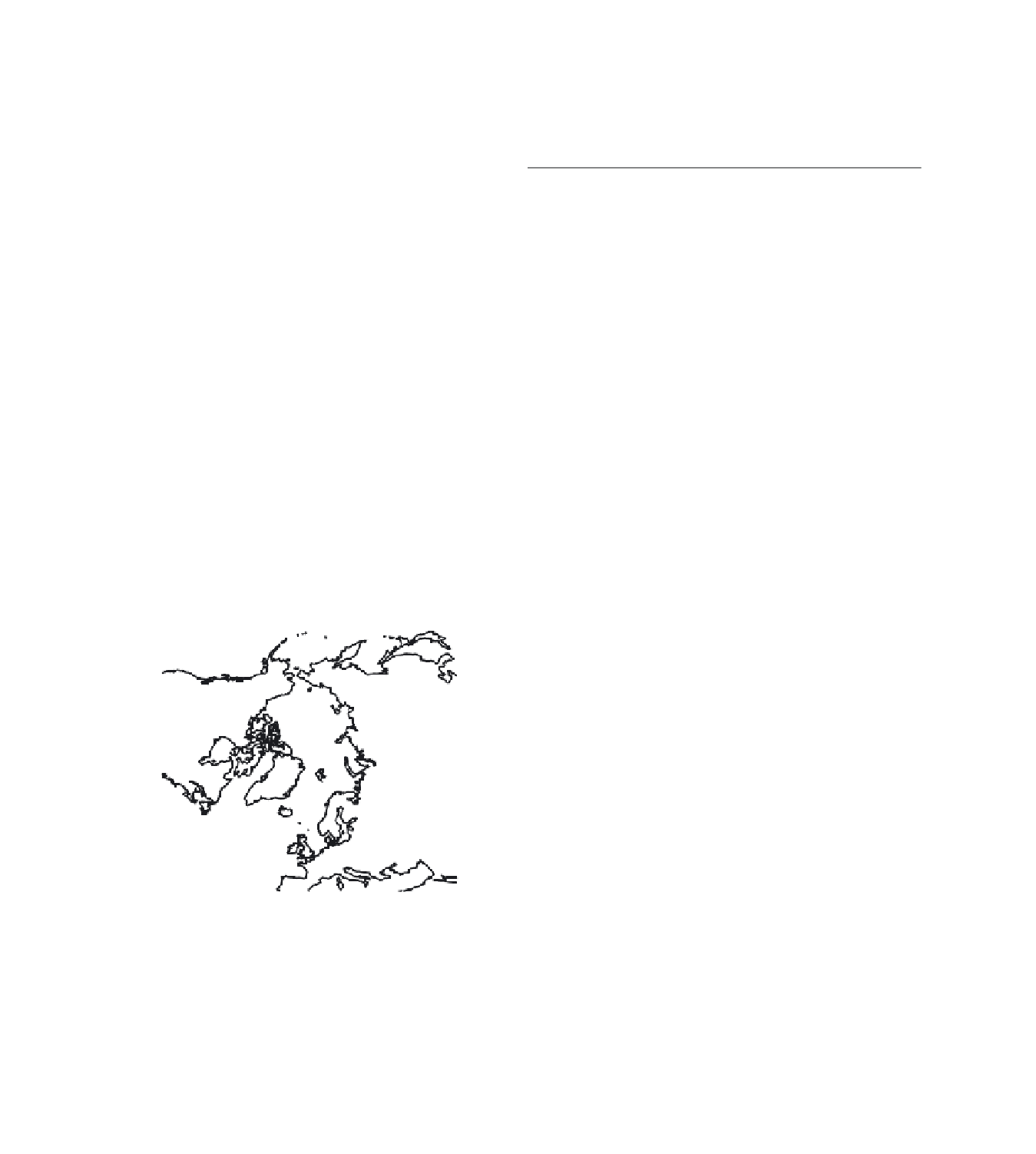Geoscience Reference
In-Depth Information
conditions. The runs are integrated from 2020 to 2040 us-
ing identical external forcing as in the IPCC-AR4 CCSM3
integrations. They are initialized at year 2020 with the land
and atmospheric conditions from run 1. The initial ice and
ocean conditions vary among the sensitivity runs (Table
2). Included among the runs is a simulation, fully initial-
ized with all of the conditions from run 1 (e.g., atmosphere,
ocean, sea ice, land state). Because this simulation was run
on a different computer from run 1, small (round-off level)
perturbations are introduced to the initial state and model
computations. This allows us to determine whether the prop-
agation of small errors in this chaotic system contaminates
the solution and results in little predictive skill for these
events. The remaining four sensitivity runs use either ice or
ocean conditions initialized from run 1. For sensitivity runs
that apply run 1 initial ice conditions, the ocean initial state
is obtained from another of the ensemble members at year
2020 (and similarly for runs initialized with the run 1 ocean
state). This results in a set of five sensitivity runs as shown
in Table 2. This is too small to provide robust statistics on
the predictive skill of these events. However, as illustrated
below, they do provide insight into the role of the ice and
ocean memory on the simulated rapid ice loss.
The time series of September ice extent from these simu-
lations is shown in Figure 5. even the simulation with 2020
conditions that are identical to run 1 (Figure 5b) diverges
Table 2.
Sensitivity Simulations Initialized at Year 2020 From the
IPCC-AR4 CCSM3 Simulations
a
Ice Conditions Ocean Conditions
Sensitivity run 1 run 1 run 1
Sensitivity run 2 run 4 run 1
Sensitivity run 3 run 3 run 1
Sensitivity run 4 run 1 run 4
Sensitivity run 5 run 1 run 3
a
The initial atmosphere and land conditions are taken from run 1.
The initial ice and ocean conditions are taken from various ensem-
ble members as shown here.
quite rapidly from the run 1 solution because of the round-
off level differences in the integration. None of the sensitiv-
ity runs simulate an increase in ice cover from 2020 to 2025
of the same size as run 1, and not all of them simulate an
abrupt ice loss. For the three sensitivity simulations that ex-
hibit abrupt September ice loss, the lengths of the events are
about half as long as the run 1 event. Also, the timing of the
initiation of the event varies among the different sensitivity
runs. This suggests that the chaotic nature of the climate sys-
tem plays a critical role in the year-to-year evolution of the
Arctic ice cover and that knowing the ice or ocean conditions
several years prior to the event provides little predictive ca-
pability. However, this analysis may not be exhaustive, and
some predictive skill may be gleaned from longer-timescale
atmospheric variations not considered here. Also, to robustly
assess potential predictive skill requires a much larger set of
sensitivity runs, which is beyond the scope of the present
study.
4. CONCLUSIONS
The abrupt events present in the IPCC-AR4 CCSM3 sim-
ulations occur at different times, over different regions, and
with a different resulting sea ice change. There is little indi-
cation that large regions of the ice cover reach a threshold
in the form of a critical ice thickness or ice area that then
results in rapid ice loss. Additionally, the sea ice conditions
at the termination of the different events vary from near
seasonally ice free to a considerable (>4 million km
2
) ice
cover. While we cannot definitively rule out the presence of
a threshold-type behavior that is somewhat masked by cli-
mate noise, our results suggest that this is unlikely. Instead,
intrinsic variability seems to plays a critical role in the rapid
ice loss in these simulations, and they appear to result from
an increasing natural variability associated with the thinning
ice cover combined with a considerable forced change. This
is consistent with the analysis of
Merryfield
et al
. [this vol-
ume] that considered the bifurcation structure of a simplified
model of the CCSM3 events.
Figure 4.
Correlation of detrended annual mean sea level pressure
at every point with the detrended time series of annual mean Arctic
Ocean heat transport from 2000 to 2049 for all of the ensemble
model runs. The detrended time series from each run is concate-
nated giving a total of 400 temporal data points. The contour in-
terval is 0.1.
















































Search WWH ::

Custom Search